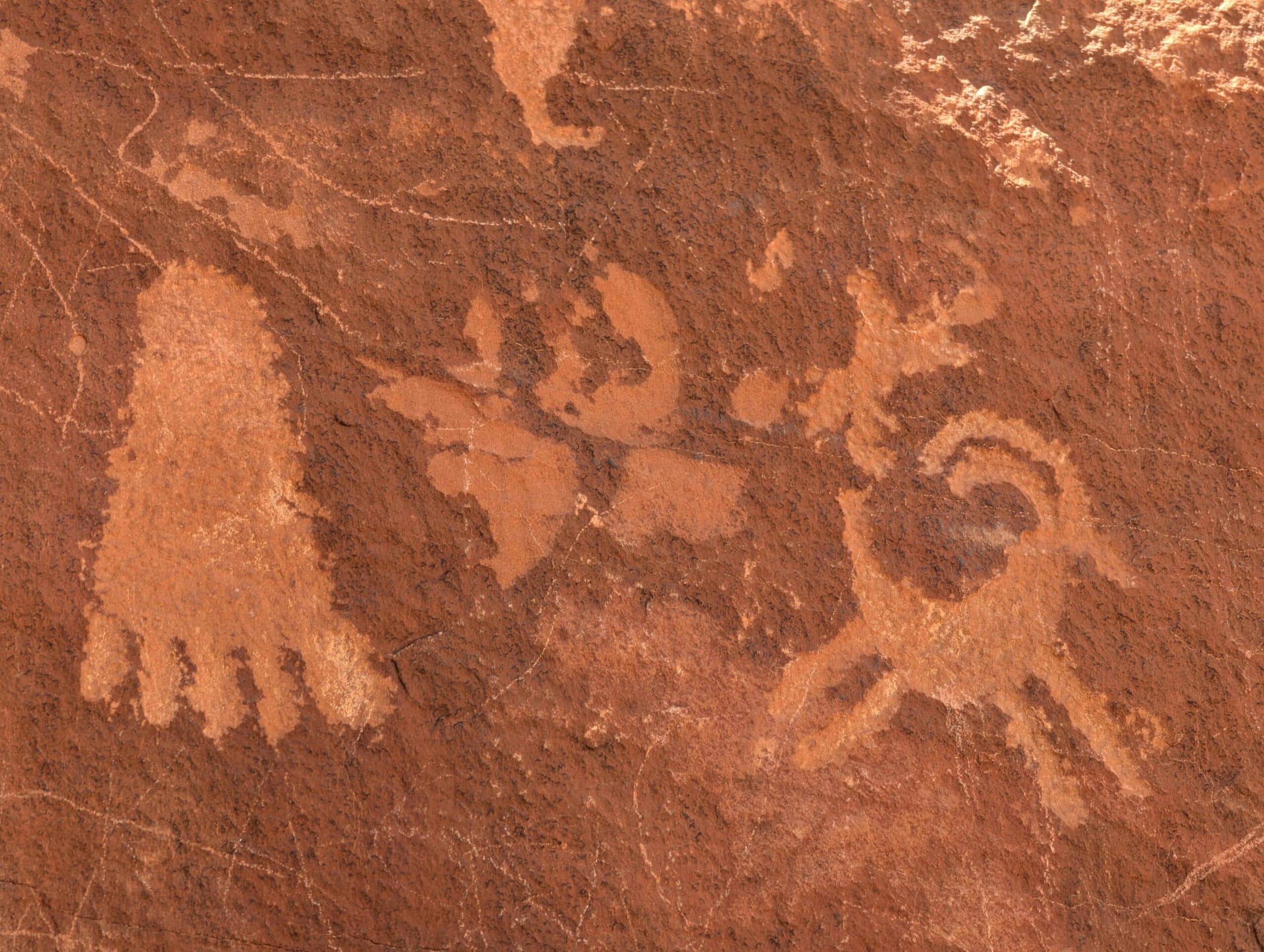


Lesson Objective: Scholars know that weather can be defined by current atmospheric conditions, including temperature, precipitation, humidity, wind, and air pressure. Weather maps present information about these conditions using a common set of symbols.
Materials Needed
Prep
What are scholars doing in this lesson?
Do Now
Launch
Activity
[Tip: Provide scholars with a zip code, so they can easily find information.]
Discourse Debrief experiment/activity:
Make connections to the Essential Question:
Accountability (Lab Notebook)
I think meteorologists use tools to measure the current weather and make hypotheses about what the weather will be in the near future. For example, if they measure the temperature and it is 80°F, they might predict that tomorrow will be 77°F because usually the temperature is pretty similar from one day to the next. Or if they see that there is a rainstorm nearby and the area is getting cloudy, they might predict rain.
Scoring Award points as follows:
Lesson Objective: Scholars can distinguish between weather and climate and know the terms cannot be used interchangeably. (Weather describes the atmospheric conditions in the moment, and climate is defined by the typical weather patterns in an area over time. Location on Earth has an impact on climate.)
Materials Needed
[Materials Management Tip: Laminate the maps, so scholars can mark them with dry erase markers.]
Prep
What are scholars doing in this lesson?
Do Now
Launch
Activity
Discourse Debrief experiment/activity:
Make connections to the Essential Question:
Make broader connections:
[Tip: Ensure that scholars are able to differentiate between degrees of latitude/longitude and the degrees used to measure temperature.]
Accountability (Exit Ticket) Li Wei is looking at two maps on the weather.gov website: one climate map and one weather map.
1. Which map will look completely different in 24 hours? Explain. [3]
The weather map will look completely different in 24 hours. Weather is just a measure of the current atmospheric conditions in a given location, whereas climate is the average weather conditions over a longer period of time.
2. How does the average annual surface temperature compare in locations with different latitudes? [1]
Scoring
Lesson Objective: Scholars understand that the movement of air is caused by variations in temperature and pressure. As temperature increases, air molecules spread and rise, whereas decreasing temperature makes them condense and fall. Denser air tends to have higher pressure. Air molecules actively spread to fill the space around them evenly, so in areas where the air is not evenly dense (differences in air pressure), the high-pressure area will flow into the lower pressure area, creating wind.
Materials Needed
Prep
What are scholars doing in this lesson?
Do Now
Launch
Experiment
Discourse Debrief experiment/activity:
Make connections to the Essential Question:
Make broader connections:
Accountability (Exit Ticket)
Scoring
Lesson Objective: Scholars know that water reacts predictably to atmospheric changes and affects the weather conditions we experience. As water evaporates into the air when heated, the amount of water vapor in the air increases, causing an increase in humidity. Water also falls to the earth in various forms as precipitation.
Materials Needed
Prep
What are scholars doing in this lesson?
Do Now
Launch
[Tip: Scholars studied the water cycle in elementary school and should remember it well. Press them to connect their prior knowledge to the new information they learn to deepen their understanding.]
Experiment Adapted from Exploring Water Cycle Demonstrations by NASA
Discourse Debrief experiment/activity:
Make broader connections:
Make connections to the Essential Question:
Accountability (Exit Ticket) The graph and table below provide information about the weather conditions in Orlando, Florida, over several hours one day. Florida is bordered by the Atlantic Ocean on three sides.
Weather Conditions for Orlando, FL
| Time | Humidity | Precipitation |
|---|---|---|
6:00 AM |
21% |
None |
9:00 AM |
43% |
None |
12:00 PM |
65% |
None |
3:00 PM |
88% |
None |
Current Temperature in Orlando, FL
| Time | 6:00 AM | 9:00 AM | 12:00 PM | 3:00 PM |
|---|---|---|---|---|
Temperature |
78°F |
85°F |
93°F |
94°F |
1. Based on the weather data above, do you predict that the people in Orlando, Florida, should expect precipitation in the next 24 hours? Include evidence and reasoning to support your response. [3]
Orlando, Florida, should expect to receive precipitation within 24 hours. Over the course of the day, the temperature has increased from 78°F to 94°F, which would create more evaporation. The humidity, in turn, has been increasing, and when it reaches 100 percent, it will likely rain. Because the humidity is already up to 88 percent as of 3:00 PM, rain is likely to occur in the coming hours.
2. As a sample of very moist air rises from sea level to a higher altitude, the probability of condensation occurring in that air sample will ______. [1]
Scoring
Lesson Objective: Scholars can explain how solar radiation results in unequal heating of the Earth and has a significant effect on the air masses that shape the climate in an area. They also know that air masses can be categorized based on where they form, near poles or equator and over land or over water. The temperature and humidity of an air mass are predictable and help create the climate.
Materials Needed
Prep
What are scholars doing in this lesson?
Do Now
Launch
Activity
Discourse Debrief experiment/activity:
Make broader connections:
Make connections to the Essential Question:
Accountability (Exit Ticket) [Note: Print this Exit Ticket on two pieces of paper and in color, so scholars can reference the maps while they answer the questions.]
Use the maps below to help you answer the questions on the next page. The first map shows the average temperature on Earth’s continents throughout the year.

Image Credit: OchToms, Wikipedia
The second map shows the average temperature on the surface of the Earth’s oceans throughout the year.

Image credit: NOAA Physical Sciences Laboratory
Two scientists were discussing trends they noticed in the two maps:
Dr. Raynor Schein: “Air and ocean temperatures are warmer near the equator and colder near the poles due to differences in solar radiation.”
Dr. Augusta Wynd: “Air and ocean temperatures are colder near the equator and warmer near the poles because the poles have ice and the equator doesn’t.”
1. Which scientist do you agree with? Include evidence and reasoning to support your response. [3]
I agree with Dr. Raynor Schein because solar radiation causes different areas of Earth to be warmer than others due to the amount of sunlight they receive. Areas closer to the equator tend to be hotter, whereas areas near the poles tend to be colder, and this trend holds true for both land and water. On the first map, the land nearest the equator had the highest average temperatures (around 30°C) and areas near the poles had the lowest (around −30°C). Similarly, on the second map, areas near the equator had the highest ocean surface temperatures (around 30°C), whereas areas near the poles had the lowest temperatures (slightly below 0°C).
2. On the second map, draw an X in one location where you might expect to find a cold, dry air mass. [1]
Exemplar:
3. A student observed the following weather conditions in Albany, New York, for two days: The first day was warm and humid with southerly winds. The second day, the temperature was 15 degrees cooler, the relative humidity had decreased, and the wind direction was northwest. Which type of air mass most likely had moved into the area on the second day? [1]
Scoring
1. Award points as follows:
2. Award one point for X marked near the Earth’s poles and over the land (not the water).
[Note: It is not always the case that landlocked areas have dry climates, but scholars only have a base- level understanding of climate trends and should not be penalized if they choose a location that has high humidity in reality.]
3. Award one point for answer B.
Lesson Objective: Scholars understand that the movement of air masses creates frontal boundaries that result in changes to weather conditions. When warm air and cold air meet, the warmer air loses heat and some of its water vapor condenses. This forms clouds along the frontal boundary, which will bring precipitation. Commonly seen fronts include cold, warm, stationary, and occluded. Fronts are represented with standardized symbols on a weather map.
Materials Needed
Prep
[Materials Management Tip: Consider how scholars will clean up the tanks after this activity if you have back-to-back classes.]
What are scholars doing in this lesson?
Do Now
Launch
Experiment
Discourse Debrief experiment/activity:
Make connections to the Essential Question:
Make broader connections:
Accountability (Exit Ticket)
1. Which statement best describes how an air front is formed? [1]
2. Draw a diagram to demonstrate what happens during a cold front. Ensure you include the following:
Exemplar:
3. Why do clouds usually form at the leading edge of a cold air mass? [1]
Scoring
Do Now
Launch
Activity
Discourse Debrief experiment/activity:
Make connections to the Essential Question:
Make broader connections:
Accountability (Exit Ticket) The map below shows a recent weather report for the Midwestern United States. Use the map to answer the questions that follow.
1. In the coming hours, is Billings or St. Louis more likely to experience stormy weather? [1]
Billings
2. Was the weather likely warmer in Casper or Omaha at the time of this forecast? Read all statements and place a checkmark () next to the correct statement. [1]
The weather is warmer in Omaha because a warm front just passed through, but the warm front has not yet reached Casper. |
|
The weather is warmer in Casper because a warm front just passed through, but the warm front has not yet reached Omaha. |
|
The weather is warmer in Casper because a cold front just passed through, but the cold front has not yet reached Omaha. |
|
The weather is warmer in Omaha because a cold front is heading towards Casper. |
Scoring
Lesson Objective: Scholars can explain how the Earth’s rotation causes unique swirling patterns in weather that affect the movement of water and air in the atmosphere. Different parts of the Earth rotate at different speeds, so rather than moving in a straight line, moving air/weather follows a curved course across Earth’s surface. The Coriolis effect causes most weather and fronts in the United States to move counterclockwise from west to east.
Materials Needed
Prep
What are scholars doing in this lesson?
Do Now
Launch
Experiment Adapted from Coriolis Effect Activity by Teach Earth Science, (CC BY-NC-SA 4.0)
Discourse Debrief experiment/activity:
Make connections to the Essential Question:
Make broader connections:
Lesson Objective: Scholars understand that especially unstable atmospheric conditions, such as large changes to air pressure, can lead to extreme weather events, and some places are more prone to these conditions than others.
Materials Needed
What are scholars doing in this lesson?
Do Now
Launch
Activity
Discourse Debrief experiment/activity:
Make connections to the Essential Question:
Make broader connections:
Accountability (Exit Ticket)
Lesson Objective: Scholars can explain how climates are created by the patterns in the circulation of air and water that result from unequal heating and rotation of the Earth.
Materials Needed
What are scholars doing in this lesson?
Do Now
Launch
Dear SA Scholars,
I am a second grader. I live in New York, and I have a cousin who lives in Nevada. Every time I visit my cousin, it’s really hot and dry there. I mean really, really hot! I feel like the whole time I’m there, my throat is parched and I just want water! I know we both live in the same country, so I am really confused about how the climate can be so different there. Please help!
Sincerely,
Charlie
Activity
[Engagement Tip: Provide themed stationery paper and an envelope for each scholar to write their finalized “return letter” on.]
Discourse Debrief experiment/activity:
Make connections to the Essential Question:
Accountability (Lab Notebook) Allow scholars 5–10 minutes to revise their letter based on the conversation the class had during Discourse.
Dear Charlie,
What a great question! The reason you and your cousin experience different weather is because you have a different climate.
Nevada is closer to the equator, surrounded by land, and receives a lot of direct sunlight. This makes Nevada hot and dry. New York is farther from the equator, near an ocean, and receives less energy from the sun. This makes it cooler and wetter than Nevada.
If you look at Map 1, which I included, you can see that Nevada receives close to twice the amount of solar energy that New York gets (2,500 kWh/m2 vs. 1,200 kWh/m2) annually! Because their climates are so different, it is more common to experience hot and dry weather in Nevada than in New York.
Sincerely,
SA Scholar
Scoring Award points as follows:
Lesson Objective: Scholars can explain how our daily weather is affected by the cycling of water through Earth’s systems and by the movement and interactions of air masses. Materials Needed
•For each scholar: Current weather map for their date and location
Prep
•Materials Prep:
◦Print a current weather map for your specific region the morning of this lesson.
What are scholars doing in this lesson?
•Scholars use their knowledge to study a weather map and create a forecast of their own.
Do Now
•Follow the Do Now plan.
Launch
•Explain: We’ve reached the end of the unit, and you now know many of the scientific principles behind meteorology. To put you to the test, today, you will take on your final challenge: to study a weather map and create a forecast of your own!
•Show two sample weather forecasts (such as these: 1, 2) and allow scholars to take notes on the parts of each forecast.
Activity
•Scholars study the weather map and script out a weather forecast.
•As scholars are working and practicing, circulate and assess their mastery of the unit’s goals. Record qualitative data and make a plan to follow up with scholars who need additional support.
Discourse Debrief experiment/activity:
•Select scholars to “perform” their weather forecast for the group. Have the class evaluate the content of each forecast and the supporting evidence.
[Engagement Tip: Enlarge the picture that scholars created their forecasts from and display it on a large screen if possible so they can stand in front of it like a real forecaster!]
[Parent Investment Tip: Videotape some of the forecasts and send them to families!]
Accountability (Exit Ticket)
1.What scientific understandings allow scientists to predict the weather? Include three pieces of evidence and support your reasoning. [5]
Consider addressing the following in your response:
•the water cycle
•air temperature, pressure, and movement
•solar radiation and latitude
•Earth’s rotation
Meteorologists apply their knowledge of weather and climate to analyze current conditions and make short-term predictions about the future. Meteorologists must understand the factors that contribute to weather and the creation of climate to understand the behavior of the air and water on Earth.
Meteorologists must understand the water cycle. This helps a meteorologist predict whether precipitation might be coming to an area soon. Knowing that precipitation follows condensation (cloud formation) is a helpful clue because if they see the skies getting cloudier in an area, they know it is likely that precipitation will follow. They can also apply their understanding of evaporation to predict the humidity in an area.
Meteorologists must also understand how temperature relates to air pressure and movement. Hotter air is less dense and tends to rise, whereas colder air is more dense and sinks. Areas more tightly packed with gas molecules have higher pressure, and this air tends to flow into areas of lower pressure. This can change the temperature, create wind, and bring stormy weather. Earth’s rotation causes the Coriolis effect, which allows meteorologists to predict how air will move in specific patterns as it spins.
Understanding these concepts prepares meteorologists to make good predictions about what the weather will be. By applying their understanding of the behavior of water and air in our atmosphere, good meteorologists can judge the likelihood of a number of weather conditions with surprising accuracy. Once you understand the science behind the weather, you too can think like a meteorologist!
Scoring
1.Award points as follows:
•One point for claim that meteorologists predict the future using their understanding of the large-scale processes behind the movement of Earth’s water and air (or similar)
•One point for each piece of accurate, relevant evidence that supports the claim and explains how meteorologists make predictions (up to three points)
[Note: Scholars do not need to address all points in their response to receive full credit but must include three separate pieces of evidence to support their claim.]
•One point for a concluding sentence or paragraph that summarizes their argument
Vocabulary List
resources
Access a wide array of articles, webinars, and more, designed to help you help children reach their potential.

ES PBL Grade 2: Brooklyn Bridge
Educator
Curriculum
Elementary School
2nd
PBL

ES PBL Grade 3: Iroquois and Lenape
Educator
Curriculum
Elementary School
3rd
PBL

Grade 1: PBL School – How It Works!
Educator
Curriculum
Elementary School
1st
PBL

Grade 4: PBL A Nation is Born
Educator
Curriculum
Elementary School
4th
PBL
NEWSLETTER
"*" indicates required fields
